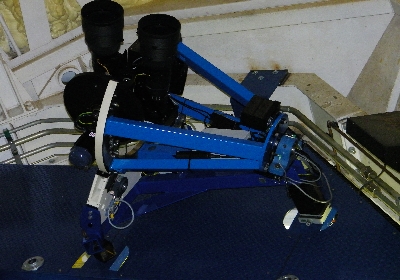 | APOW
Assassin Picture of the Week |
2013 August 11

Neptune Discovered!
OK, so maybe we are not the
first to discover Neptune, but we were certainly glad to see it in
recent Brutus
data. Why? Planets
and asteroids move, so they provide an excellent test for any
transient detection system like ASAS-SN. In fact, we have been using
asteroids to obtain approximate estimate of our detection efficiency
and to refine our detection algorithms. In this case we are glad to
see Neptune because it is so bright (V~8 mag) that it is saturated in
our CCD data (the ring-like protrusions are actually saturation
"bleeding columns"), and yet it was detected and passed various cuts
we employ to seperate cosmic rays, image subtraction artifacts
etc. from real transients.
See previous APOWs:
Multiband
photometric follow-up of ASASSN-13aw (SN 2013dr);
"Assassin"
Unit 1: Brutus;
How
ASAS-SN Discovers Supernovae: Case of Supernova ASASSN-13bb;
NGC
2617: Dramatic Seyfert Type Change;
ASASSN-13/SN
2013da: Our First Supernova Three Weeks Later;
M31
and Companions;
This homepage is maintained by Ben Shappee and Kris Stanek.
Sun Aug 11 10:30:51 EDT 2013

